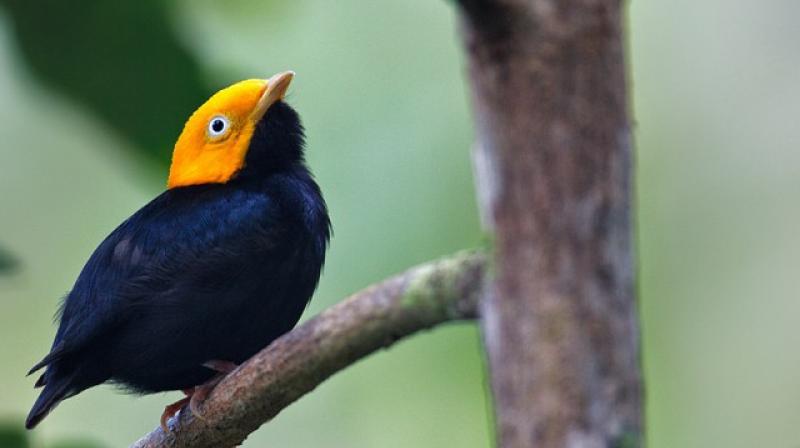
After extensive research a team from the University of Toronto have revealed their discovery: the very first hybrid bird species ever found in the Amazon rainforest.
Associate professor Jason Weir is an expert on the biodiversity of New World birds and senior author of the study.
“While hybrid plant species are very common, hybrid species among vertebrates are exceedingly rare,” explained Weir.
A hybrid species is developed when two species mate to produce a hybrid population, which is unable to interbreed with the parental species. In this particular case, the two parents are the snow-capped manakin and the opal-crowned manakin.
Over the course of two separate trips to Brazil, the research team gathered genetic and feather samples. This enabled them to sequence a large portion of the new bird’s genome.
After examining over 16,000 genetic markers, the researchers determined that 20 percent of the genome came from the snowy-crowned manakin while 80 percent of the inheritance was from the opal-crowned manakin.
Using a technique called coalescent modelling, the team managed to establish that the golden-crowned split off from its parental species around 180,000 years ago when the two parental species originally mated.
The experts also determined that both parental species diverged from a common ancestor about 300,000 years ago, meaning that all three species are relatively new.
“Most Amazon bird species diverged from their most recent relative around 1.5 to 4 million years ago, so these are all young birds by comparison” said Weir.
The golden-crowned manakin lives in an area of the south-central Amazon Rainforest that is largely separated from areas where snow-capped and opal-crowned live by wide rivers that the hybrid species will not seem to cross.
Weir explained that the species likely survived due to this geographical isolation from its parental species, when a past ice age caused the rainforest to shrink and wide rivers to form.
“Without geographic isolation, it’s very likely this would never have happened because you don’t see the hybrids evolving as separate species in other areas where both parental species meet,” said Weir.






![Separated Twins Continue Recovery [Video] Separated Twins Continue Recovery [Video]](https://webtopnews.com/wp-content/uploads/2016/10/Separated-Twins-Continue-Recovery-Video.jpg)






